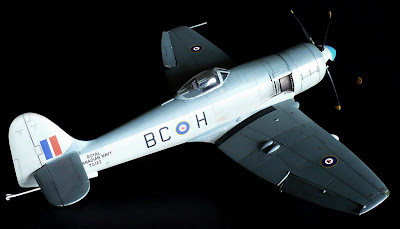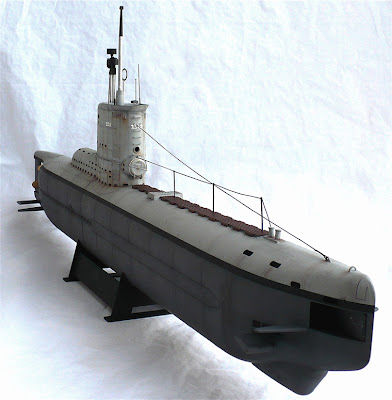From Wikipedia"
Tiger I is the common name of a German heavy tank developed in 1942 and used in World War II. The final official German designation was Panzerkampfwagen VI Tiger Ausf.E, often shortened to Tiger. It was an answer to the unexpectedly formidable Soviet armour encountered in the initial months of the Axis invasion of the Soviet Union, particularly the T-34 and the KV-1. The Tiger I design gave the Wehrmacht its first tank mounting the 88 mm gun, in its initial armored fighting vehicle-dedicated version, which in its Flak version had previously demonstrated its effectiveness against both air and ground targets. During the course of the war, the Tiger I saw combat on all German battlefronts. It was usually deployed in independent tank battalions, which proved to be quite formidable.
While the Tiger I was feared by many of its opponents, it was over-engineered, used expensive and labour intensive materials and production methods, and was time-consuming to produce. Only 1,347 were built between August 1942 and August 1944. The Tiger was prone to certain types of track failures and immobilizations, and limited in range by its huge fuel consumption. It was, however, generally mechanically reliable but expensive to maintain. It was also complicated to transport, and vulnerable to immobilization when mud, ice and snow froze between its overlapping and interleaved road wheels in winter weather conditions, often jamming them solid. In 1944, production was phased out in favour of the Tiger II.
The tank was given its nickname Tiger
Today, only a handful of Tigers survive in museums and exhibitions worldwide. The Bovington Tank Museum's Tiger 131 is currently the only one restored to running order.
The Tiger differed from earlier German tanks principally in its design philosophy. Its predecessors balanced mobility, armour and firepower, and were sometimes outgunned by their opponents.
The Tiger I represented a new approach that emphasised firepower and armour. While heavy, this tank was not slower than the best of its opponents. However, with over 50 metric tons dead weight, suspensions, gearboxes, and other such items had clearly reached their design limits and breakdowns were frequent. Design studies for a new heavy tank had been started in 1937, without any production planning. Renewed impetus for the Tiger was provided by the quality of the Soviet T-34 encountered in 1941. Although the general design and layout were broadly similar to the previous medium tank, the Panzer IV, the Tiger weighed more than twice as much. This was due to its substantially thicker armour, the larger main gun, greater volume of fuel and ammunition storage, larger engine, and more solidly-built transmission and suspension.
The Tiger I had frontal hull armour 100 mm (3.9 in) thick and frontal turret armour of 120 mm (4.7 in), as opposed to the 80 mm (3.1 in) frontal hull and 50 mm (2 in) frontal turret armour of contemporary models of the Panzer IV. It also had 60 mm (2.4 in) thick hull side plates and 80 mm armour on the side superstructure and rear, turret sides and rear was 80 mm. The top and bottom armour was 25 mm (1 in) thick; from March 1944, the turret roof was thickened to 40 mm (1.6 in). Armour plates were mostly flat, with interlocking construction. The armour joints were of high quality, being stepped and welded rather than riveted and were made of maraging steel.
The The gun's breech and firing mechanism were derived from the famous German "88" dual purpose flak gun. The 88 mm KwK 36 L/56 gun was the variant chosen for the Tiger and was, along with the Tiger II's 88 mm KwK 43 L/71, one of the most effective and feared tank guns of World War II. The Tiger's gun had a high muzzle velocity and extremely accurate Leitz Turmzielfernrohr TZF 9b sights (later replaced by the monocular TZF 9c). In British wartime firing trials, five successive hits were scored on a 16 by 18 in (410 by 460 mm) target at a range of 1,200 yards (1,100 m).Tigers were reported to have knocked out enemy tanks at ranges greater than 2.5 miles (4.0 km), although most World War II engagements were fought at much shorter ranges. Triangulation (range finding) equipment was not yet available,[citation needed] so tank crews had a vested interest in approaching the enemy as closely and as fast as possible.nominal armour thickness of the Tiger was reaching up to 200 mm at the mantlet.
The rear of the tank held an engine room flanked by two separate rear compartments each containing a fuel tank, radiator, and fans. The Germans had not developed an adequate diesel engine, so a petrol (gasoline) powerplant had to be used instead. The engine utilised was a 21-litre (1282 cu.in.) 12-cylinder Maybach HL 210 P45 with 650 PS (641 hp, 478 kW). Although a good engine, it was inadequate for the vehicle. From the 250th Tiger, it was replaced by the uprated HL 230 P45 (23 litres/1410 cuin) with 700 PS (690 hp, 515 kW). The engine was in V-form, with two cylinder banks at 60 degrees. An inertial starter was mounted on its right side, driven via chain gears through a port in the rear wall. The engine could be lifted out through a hatch on the rear hull roof.
The engine drove front sprockets, which were mounted quite low. The Krupp-designed eleven-tonne turret had a hydraulic motor whose pump was powered by mechanical drive from the engine. A full rotation took about a minute.
Another new feature was the Maybach-Olvar hydraulically-controlled semi-automatic pre-selector gearbox. The extreme weight of the tank also required a new steering system. The clutch-and-brake system, typical for lighter vehicles, was retained only for emergencies. Normally, steering depended on a double differential, Henschel's development of the British Merritt-Brown system. The vehicle had an eight-speed gearbox, and the steering offered two fixed radii of turns on each gear, thus Tiger had sixteen different radii of turn. In first gear, at a speed of a few km/h, the minimal turning radius was 3.44 meters (11.28 ft). In neutral gear, the tracks could be turned in opposite directions, so the Tiger I pivoted in place. There was an actual steering wheel and the steering system was easy to use and ahead of its time.















































